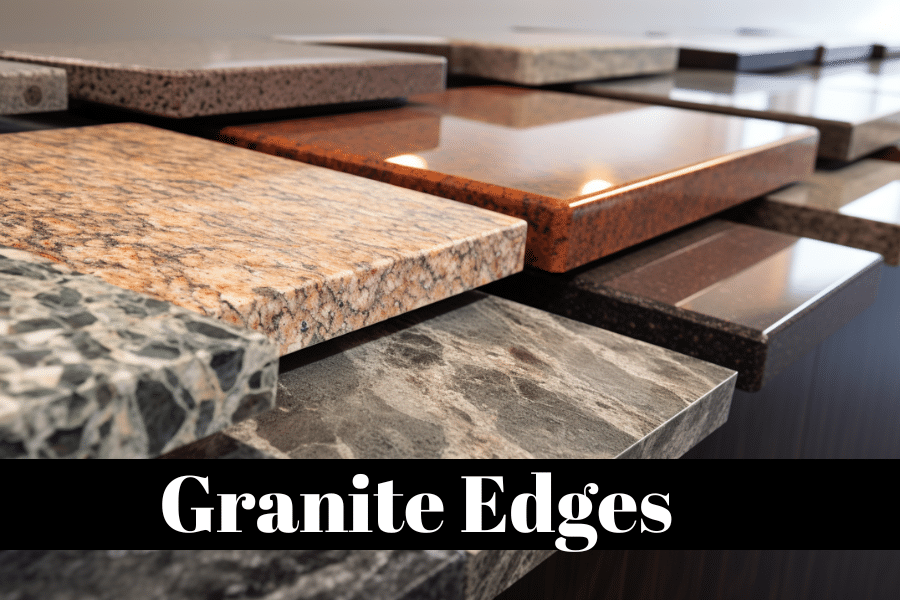
Selecting the right edge for your kitchen’s granite countertop is really important. It’s like picking the perfect accessory – it can make your kitchen look awesome!
Plus, different edges can be safer, easier to clean, or last longer.
So, it’s about making your kitchen look cool and making sure it works well for you.
In this article, I will be covering top options of granite edges for kitchen countertops.
You will learn about their pros & cons.
Important: On this website, I feature a select number of partners and companies that have products that could help my audience. As an Amazon associate, When you purchase something through my partner links, I might get paid for the referral at no extra cost to you. Read the full disclosure here.
Let’s get started.
- Understanding Granite Edge Profiles
- Popular Granite Edge Options
- Making the Right Choice
- FAQs
Understanding Granite Edge Profiles
Understanding Granite Edge Profiles is about learning the different shapes the edges of your granite countertops can be.
These shapes are not just for looks; they help make your countertop fit in with your kitchen’s style, like choosing an outfit that looks just right.
Also, think about cleaning – some edges are easier to wipe down than others.
And don’t forget safety, especially if younger kids are around.
So, whether it’s a cool smooth edge or a sharp-looking straight one, each shape gives your countertop its own special style.
Popular Granite Edge Options
Here are the most popular granite countertop edges:
Straight Edge:
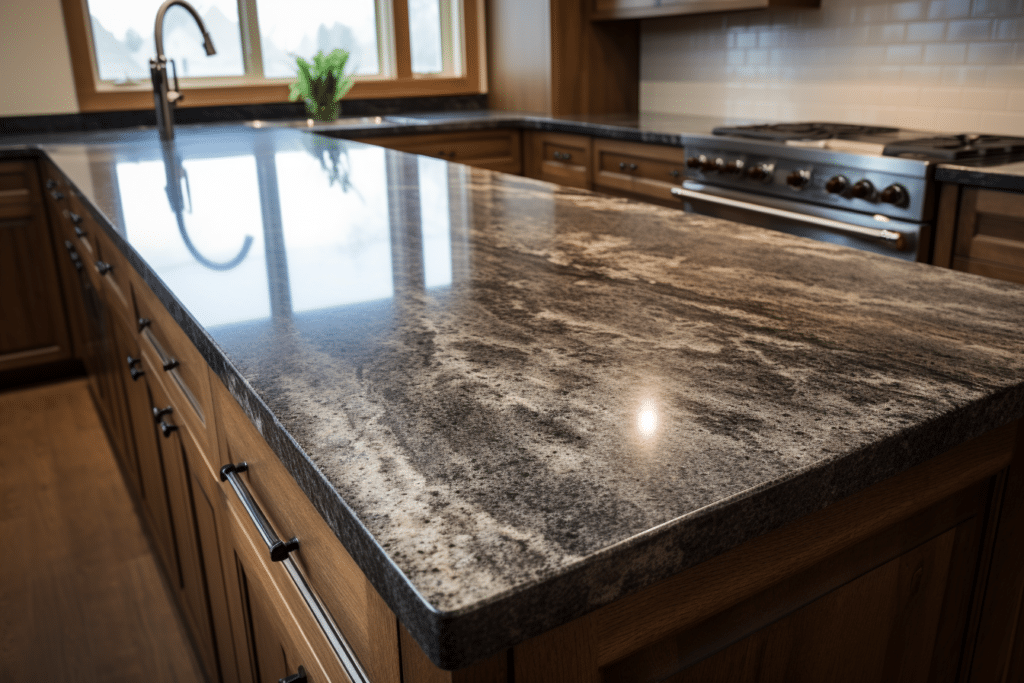
A straight edge is a flat, 90-degree edge that gives a minimalist and modern look.
It’s ideal for contemporary kitchens.
Pros:
Clean Look: A straight edge gives your new countertop a sleek and minimalistic appearance.
This clean look is very appealing and makes your kitchen feel more open and modern.
Popular Choice: Due to its simplicity and elegance, the straight edge is a popular choice among homeowners.
It’s a timeless design that complements various kitchen styles.
Cons:
Prone to Chipping: The sharp angles of a straight edge can be more prone to chipping compared to rounded edges.
This means you might need to be a bit more careful with handling heavy objects around the countertop.
May Feel Less Safe: For households with young children, the straight edge might not be the safest option due to its sharp corners.
Rounded edges are often considered safer in family-oriented kitchens.
Ogee edge
An ogee edge offers a classic and elegant look, featuring a concave radius flowing into a convex radius. It’s a sophisticated choice often used in traditional kitchen designs.
Pros:
Fancy Look for Traditional Kitchens: An ogee edge has a cool, fancy design that looks like a wave. It’s perfect for kitchens in traditional homes because it adds a touch of elegance.
Great for Kitchen Islands: This granite edge profile is awesome for kitchen islands.
It makes the island stand out as a special piece in your kitchen.
Matches Many Kitchen Designs: The ogee edge can fit into lots of different kitchen designs.
It’s versatile, so whether your kitchen is super traditional or a bit modern, this edge can be a perfect fit.
Cons:
Can Be Harder to Clean: Because of its detailed shape, an ogee edge might be a bit trickier to clean compared to simpler edges.
Crumbs and small bits of food can get caught in the curves.
May Not Suit All Modern Styles: If your home has a very modern or minimalist style, the ogee edge might look a bit too fancy.
It’s great for traditional looks but might not match super modern designs as well.
RELATED POST : Quartz vs Granite kitchen countertops : which is better
Full Bullnose Edge:
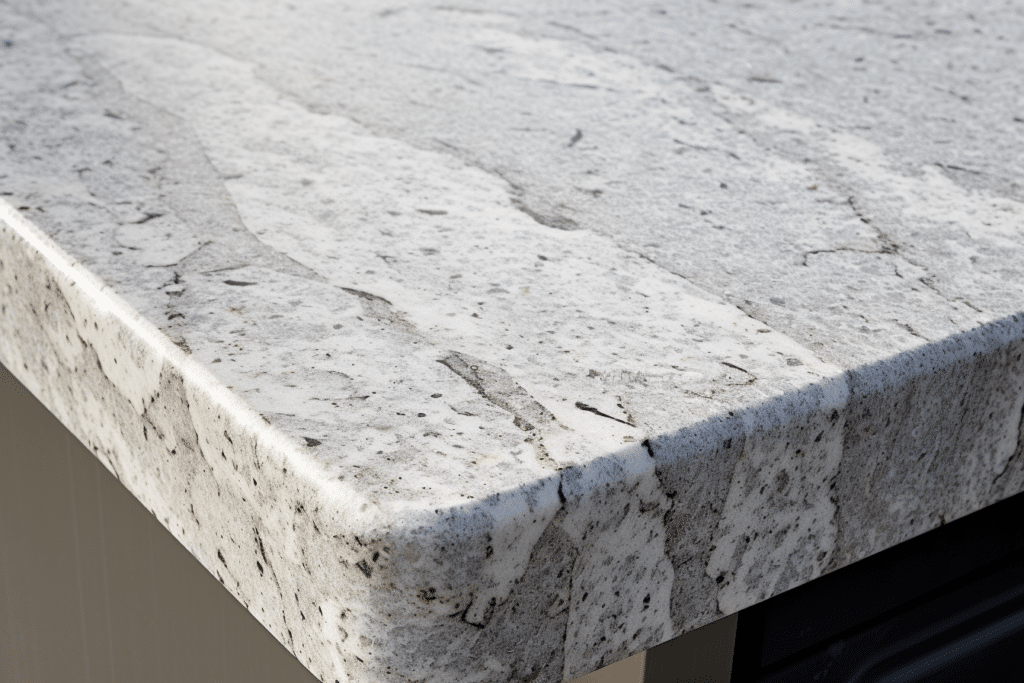
Completely rounded on the top and bottom, the full bullnose edge is smooth and safe, ideal for households with children.
Pros:
Smooth and Safe: The full bullnose edge is really smooth all around – it’s like a completely round surface.
This makes it a good choice if you have younger siblings running around, as there are no sharp corners to bump into.
Looks Cool from the Side: When you look at the side view of a full bullnose, it has a neat, rounded shape that looks cool and can fit into lots of different kitchen designs.
Versatile Style: This type of edge can go well with almost any kitchen design.
Whether your kitchen looks like it’s from the future or more like grandma’s kitchen, full bullnose edges can fit right in.
Cons:
Can Hide Beautiful Patterns: Sometimes, the round shape of a full bullnose edge can hide the cool patterns and colors on the top surface of your countertop.
It sort of wraps around, so you don’t see the pattern from the side.
May Look Too Simple for Some: If you’re going for a really fancy or modern look in your kitchen, the full bullnose might be too simple.
It’s very smooth and round, which is nice, but not super fancy.
Half Bullnose Edge:
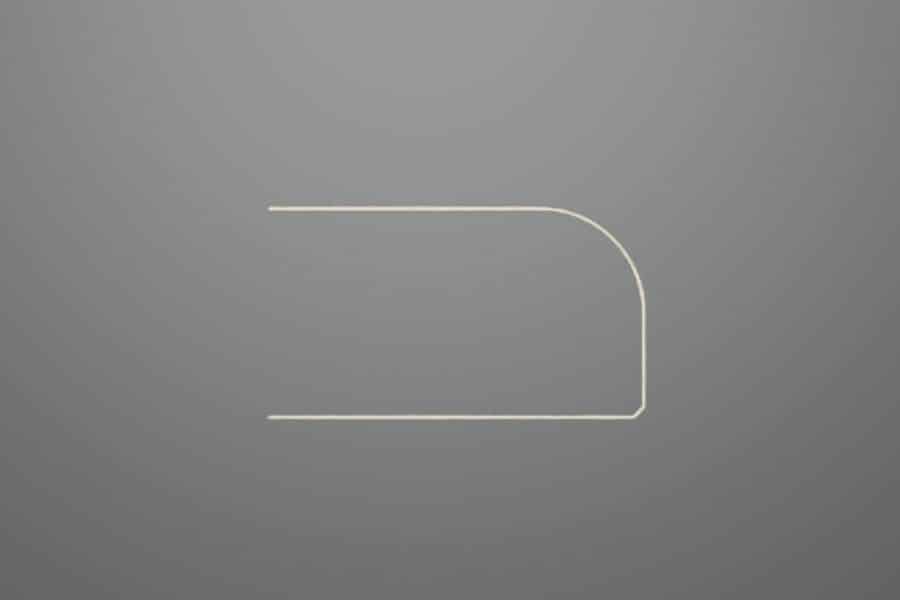
This edge is rounded on the top, but flat on the bottom, creating a smooth and safe edge. It’s versatile and works well with most kitchen styles.
Pros:
No Sharp Edges on Top: One cool thing about the half bullnose edge is that the top part is rounded.
This means no sharp edges to accidentally bump into, which is great, especially if you’re moving around quickly in the kitchen.
Shows Off More Granite: Unlike the full bullnose, the half bullnose lets you see more of your countertop’s surface from the side.
This is neat because you can see more of the cool colors and patterns of your granite.
Cons:
Sharp Bottom Edge: Even though the top edge is rounded, the bottom edge is still straight and a bit sharp.
So, you’ve got to be a bit careful, especially if you’re reaching down or if smaller kids are around.
Can Collect Water: If you spill something, the water can kind of pool or collect on the rounded top edge before dripping off.
It’s not a big deal, but it means you might have to wipe spills a bit more carefully.
RELATED POST : UNSEALED GRANITE – WHAT HAPPENS WHEN YOU DON’T SEAL IT
Bevel Edge:
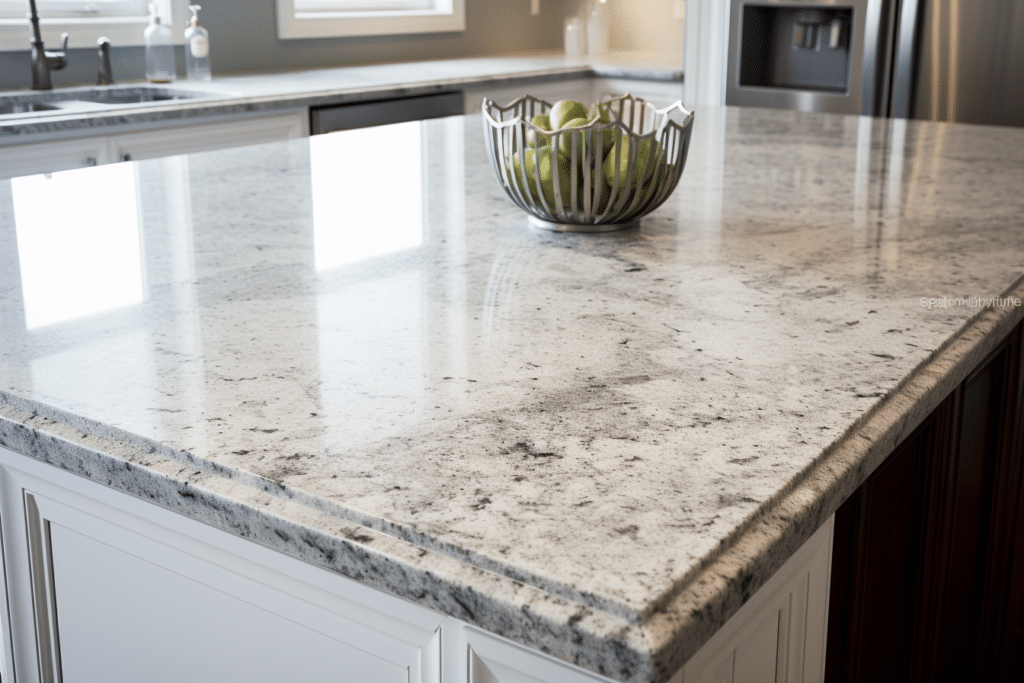
Characterized by its angular edge cut, a bevel edge slopes down at a 45-degree cuts. It adds a dynamic and modern element to countertops.
Pros:
Looks Super Cool: The bevel edge is cut at an angle, so it makes your granite countertops look really stylish and modern.
It’s got this neat, slanted look that catches your eye.
Great for Many Styles: Granite fabricators, the people who make your countertop, often recommend a bevel edge because it’s an ideal choice for lots of different kitchen styles.
Whether your kitchen is super modern or a bit classic, this edge can fit right in.

Cons:
Can Catch Crumbs: Because of the angled cut, sometimes crumbs and little bits of food can get stuck in the edge.
It’s not a big deal, but you might need to give it an extra wipe when cleaning.
Not the Softest Edge: While it’s not super sharp, the bevel edge isn’t as rounded as some others.
So, if you’re leaning against the counter or bump into it, it might feel a bit harder than a fully rounded edge.
Chiseled Edge:

This edge is rugged and raw, resembling a naturally broken piece of stone.
It’s perfect for adding a rustic or industrial feel to your kitchen.
Pros:
Super Cool Raw Look: The chiseled edge is really neat because it looks like the edge of the stone was just broken off in a natural way.
It has a raw edge that makes your countertop look rugged and cool, kind of like a rock you’d find outside.
Unique Design Element: If you want your kitchen to stand out, a chiseled edge is a great choice.
It’s not something you see every day, so it adds a custom edge to your countertop that can be a real talking point.
Cons:
Can Be Rough: Since the chiseled edge is meant to look natural, it can feel a bit rough to the touch.
If you like things super smooth, this might not be your favorite.
Might Catch Crumbs and Dust: The uneven surface of the chiseled edge can catch crumbs, dust, and little bits of food more than smoother stone edges.
So, cleaning might need a bit more attention with this style.
Dupont Edge:

The Dupont is a straight edge that drops into a curved profile, offering a sophisticated and refined look. It’s great for adding a touch of luxury.
Pros:
Fancy and Unique: The Dupont edge is a really special kind of edge. It starts off straight and then has this cool, curved edge at the bottom.
It makes your countertop look super fancy, like something out of a magazine!
Great for Making a Statement: If you want your kitchen to have a ‘wow’ factor, the Dupont edge is a great choice.
It’s not just your everyday countertop edge, so it really stands out.
Cons:
Might Be Too Fancy for Some Kitchens: Because the Dupont edge is pretty fancy, it might not match all kitchen styles.
If your kitchen is more on the simple or casual side, this edge might look a bit out of place.
Requires Careful Cleaning: The spot where the straight part meets the curved edge can catch crumbs and spills.
So, when you’re cleaning your countertop, you’ll need to pay extra attention to these areas to make sure they’re totally clean.
RELATED POST : IS GRANITE, BEST CHOICE FOR OUTDOOR KITCHENS
Waterfall Edge :
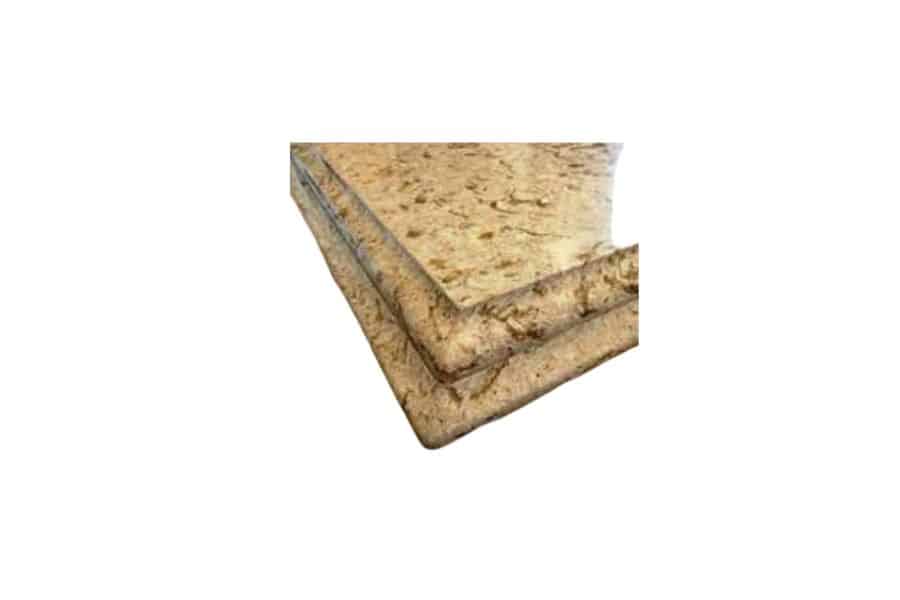
The waterfall edge is super cool because it looks like the countertop is flowing right down to the floor, just like water falling over a cliff.
It’s called a ‘waterfall edge’ because the granite keeps going over the edge of the countertop and down the side of the cabinet, making a really dramatic impact.
Ideal Scenarios for Choosing a Waterfall Edge:
If you want your kitchen or any room with a countertop to look super modern and fancy, the waterfall edge is perfect.
It’s great for kitchens that have an island because it turns the island into a stunning centerpiece. Also, if you like showing off your countertops, this edge type really lets the beauty of the stone shine.
Pros:
Looks Amazing: The waterfall edge can make any space look more luxurious and modern.
It’s a showstopper and can make your kitchen look like it’s straight out of a design magazine.
Protects Cabinets: Since the granite goes all the way down the sides, it can help protect your cabinets from dings and scratches.
Cons:
Can Be Pricey: Because the waterfall edge uses more material and is more complex to make (especially if you’re doing a triple waterfall), it can be more expensive than other edge types.
Not for Every Kitchen: The waterfall edge is super modern, so it might not fit in if your kitchen has a more traditional or cozy style.
It’s like wearing a fancy dress or a tuxedo to a casual party – it might feel a bit out of place.
Here is a video on Granite edges by Marble TV Channel
Making the Right Choice
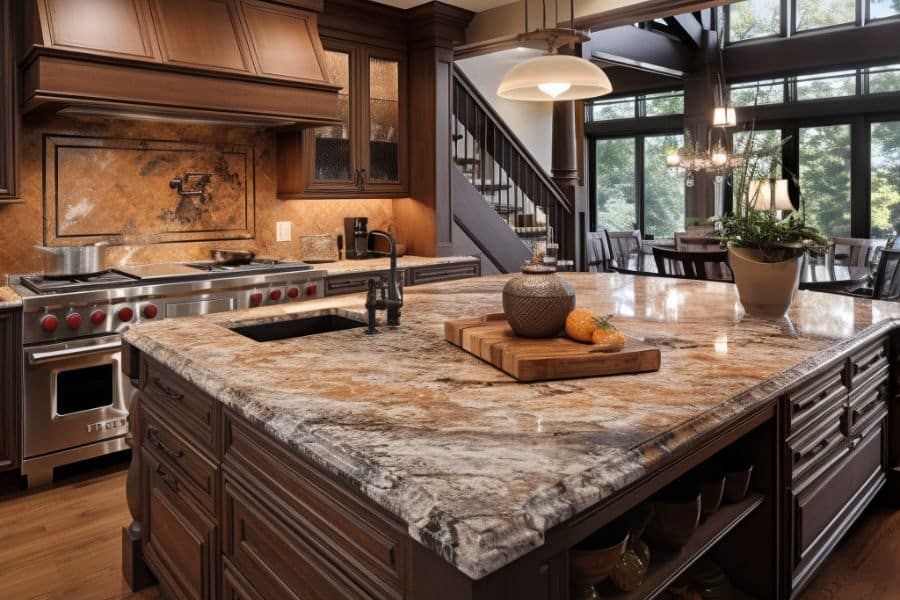
When you’re picking out the edge for your granite countertop, there are a few things you should think about to make sure you choose the best one for your kitchen.
Factors to Consider:
Your Lifestyle and Kitchen Traffic:
Think about how busy your kitchen is. Do you have lots of family members moving around, or is it usually just you?
Some edges are better for busy kitchens because they’re safer and easier to clean.
Maintenance: Some edges, like the beveled edge, might need a little more cleaning, especially in the corners.
Think about how much time you want to spend on cleaning.
Small Kitchens: If your kitchen is small, you might want to pick an edge that makes it feel bigger, like a simple, straight edge for a most contemporary look.
RELATED POST : HOW TO CLEAN AND SEAL GRANITE
Matching the Edge with Your Kitchen:
Countertop Color and Kitchen Cabinets: You’ll want to choose an edge that goes well with the colors of your countertop and cabinets.
For example, if you have a modern, contemporary design in your kitchen, you might want a sleek edge style.
Style of Your Kitchen: Think about the overall feel of your kitchen. Is it cozy and traditional, or more modern and sleek?
Your edge should match the style of your kitchen.

Different Profiles for Different Looks: There are lots of edge profiles to choose from.
Each one can give your kitchen a different feel, so pick one that you think looks best with your kitchen’s style.
Getting Help from a Pro:
Professional Fabricator’s Role: A professional fabricator is someone who knows all about making countertops.
They can be super helpful in your decision-making process.
They’ll know which edges are best for different styles and can suggest the right countertop edge for your kitchen.
Feel of Your Kitchen: A fabricator can help you understand how different edge styles will affect the feel of your kitchen.
They’ll help you pick an edge that not only looks great but also makes your kitchen feel exactly how you want it.
FAQs
How often should granite edges be sealed?
- Granite edges, like the rest of the granite surface, should typically be sealed once a year.
- However, this can vary depending on the usage and type of granite. It’s important to regularly check for signs of wear or staining, as these can indicate it’s time to reseal.
Can I change the edge profile after installation?
- Changing the edge profile after installation is possible, but it can be a complex and risky process.
- It often requires the expertise of a professional fabricator and can sometimes be as costly as getting a new countertop. It’s best to be sure about the edge profile you want before installation.
Are some granite edges more prone to chipping?
- Yes, some granite edges are more prone to chipping.
- Edges with sharp angles, like a square or straight edge, can chip more easily compared to rounded edges like a bullnose.
- The chipping risk can be reduced with proper installation and careful use.
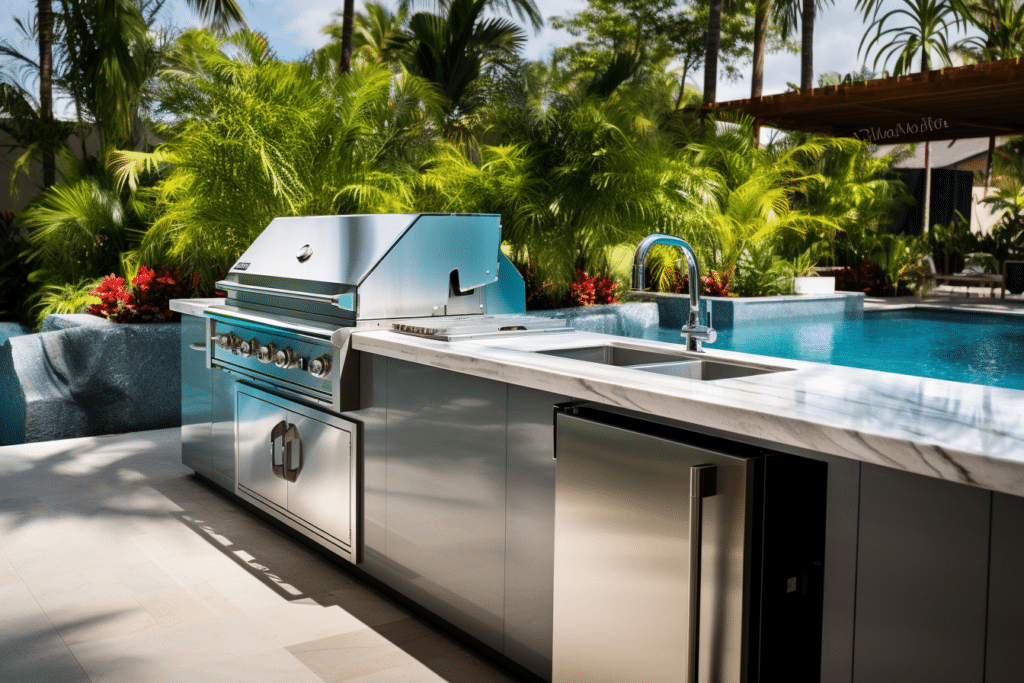
How does the choice of edge impact the overall cost?
- The choice of edge can significantly impact the overall cost of your granite countertop.
- Simple edges like a straight edge are usually less expensive, while more complex designs like an ogee or waterfall edge require more work and are therefore more costly.
- Custom edges will also increase the price.
Can granite edges be customized to match specific designs?
- Yes, granite edges can be customized to match specific designs.
- Granite fabricators can create unique edge profiles to suit individual preferences or match specific design elements in your kitchen.
- Customization allows for a wide range of possibilities but will generally increase the cost and production time.



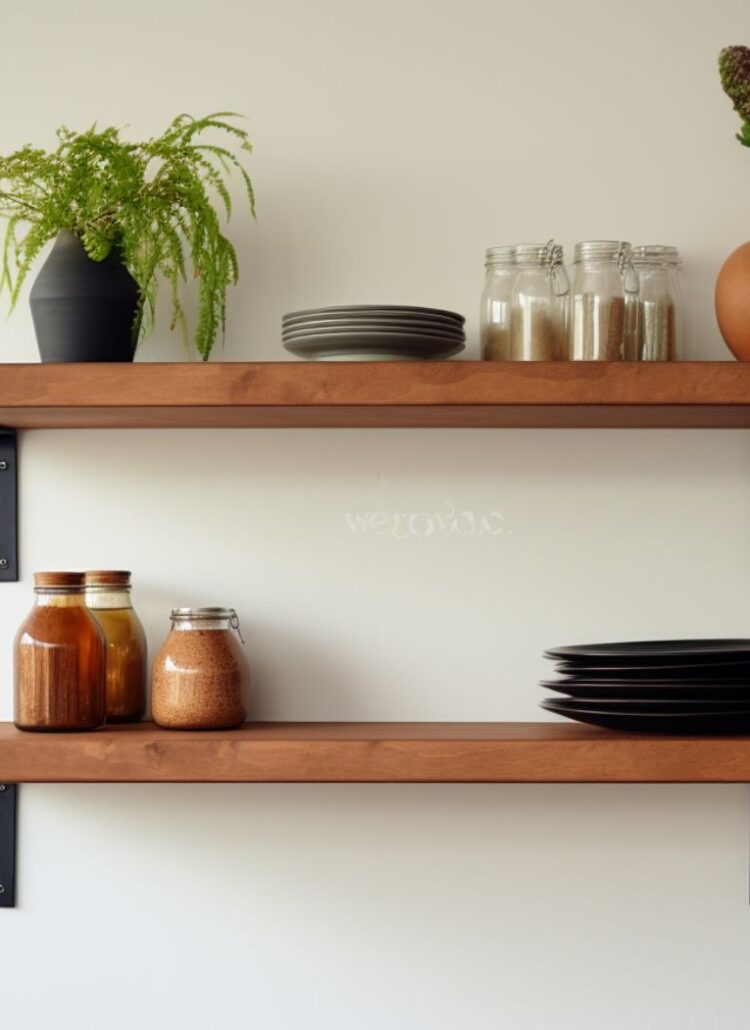


Leave a Reply